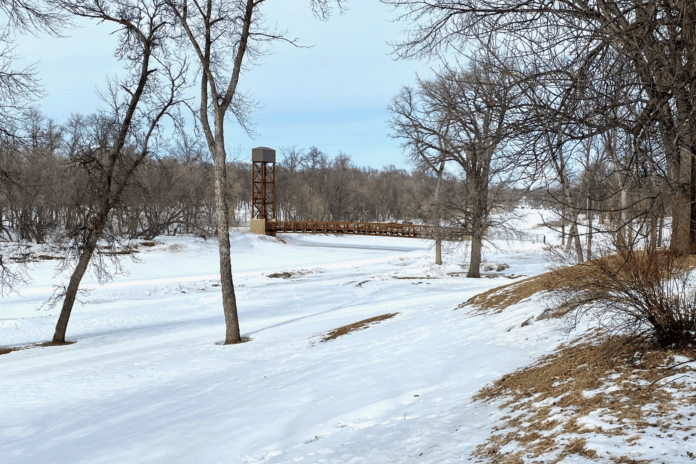The past fortnight has proven there’s a strong bond between the United States and Ukraine.
America’s churches, for example, have sent mission groups to Ukraine for years, establishing relationships, and thus causing the ongoing war to hit home personally.
Minnesotans in particular have good reason to follow developments in Ukraine, since many of our ancestors arrived from there.
Nearly 20,000 Ukrainian-Americans live in Minnesota, with the largest per capita population in northern Minnesota.
Most emigrated to the Land of 10,000 Lakes as displaced refugees following World War II, often settling in Northeast Minneapolis. That urban area remains the epicenter, with a Ukrainian-American Community Center and two Ukrainian Orthodox churches, erected nearly a century ago.
Rallies have been held here and around the world, condemning the 200,000 Russian troops invading and firing rockets into Ukraine since Feb. 24.
While a Ukrainian immigrant who came to Minneapolis as a teenager told us he was shocked by Putin’s “barbaric actions,” up in Bemidji, there’s a reality setting in.
“Putin is a lying tyrant who never was going to seek diplomatic solutions. This is not his first aggressive action either,” a middle-aged man said, likely referring to the 2014 Russian annexation into Ukraine’s Crimean Peninsula. “This is life and death, and dangerous for all Europe, not only Ukraine.”
Hopping across the frozen Red River into North Dakota, we encountered similar history.
There’s even a tiny town honoring Ukrainian settlers in the Peace Garden State called Kief, about 40 miles east of Minot, named for Kiev.
Although Ukraine was divided among many countries, including Austria-Hungary, Romania, and Russia, we know that in the 1880s, immigrants from what today is Odessa, Ukraine, began settling across Minnesota and the Dakota Territory.
Now about 30% to 40% of North Dakotans trace their lineage to immigrants from that part of the world.
Perhaps because of this, the Veterans Memorial Bridge between Fargo and Moorhead was the site of a Sunday rally in support of Ukrainians fighting for their freedom.
“I want my family in Ukraine to get out, but when I asked them, they told me they prefer to stay and fight,” a woman in Fargo said. “Daily life, they tell me, involves hiding in bomb shelters. Supplies are dwindling. The Poles have been remarkably helpful, but a lot of people cannot get to the border because Russian soldiers are around. It’s becoming a humanitarian tragedy with millions of displaced people. We need harder-hitting sanctions and more military weapons.”
She also recommended people “donate money to verified charities, read the Kiev Independent for real news and continue rallies.”
She’s currently gathering donations to send medicine, water, and bullet-proof vests to people in Ukraine.
The largest Ukrainian immigrant colonies settled west of the Missouri River, where a village named Ukraina once existed. Also north of Bismarck, in Washburn, a community continues to flourish.
They also settled in the 500 person town of Pembina, at North Dakota’s northeastern corner, along the international border, where St. John’s Ukrainian Orthodox Church remains.
Here's a map of Russian Americans, who comprise about 0.8% of the US population.
By %, North Dakota is #1, mostly due to Volga Germans who immigrated from Russia. New York, Portland, Miami, and Sacramento are cities which also have large numbers of Russians. pic.twitter.com/08H6xYsS1v— Siddharth Khurana (@SidKhurana3607) March 1, 2022
An East Grand Forks man we met has lived there his entire life, but his late grandfather came from Ukraine. He said he deeply admires Ukrainian President Volodymyr Zelenskyy’s government “fighting a foreign invader.” He also said his son in-law has been deployed to Europe “to stop the extension of a new Iron Curtain.”
“It could take them years, but Ukrainians will never accept Putin’s agenda for their country,” he added. “They’ve been a free nation for 30 years and will fight for that every day.”
A.J. Kaufman
A.J. Kaufman is an Alpha News columnist. His work has appeared in the Baltimore Sun, Florida Sun-Sentinel, Indianapolis Star, Israel National News, Orange County Register, St. Cloud Times, Star-Tribune, and across AIM Media Midwest and the Internet. Kaufman previously worked as a school teacher and military historian.
















